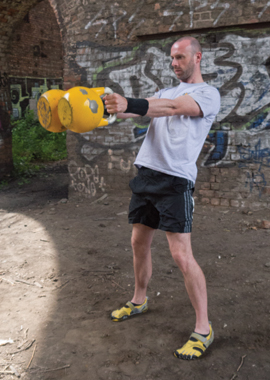Fight to the Bell Workout
Intermediate / Advanced Level
Fight to the Bell is 3 rounds lasting 5 mins each. The workout contains five kettlebell exercises, where you will be working for a minute on each exercise, aiming for the maximum amount of reps possible. This workout will not only test your strength and endurance, but also your ability to recover quickly. Make sure you warm-up fully before proceeding with this workout.
INstruction
3 Rounds for Reps
Double Swings x 1 min
Double Front Squats x 1 min
Double Crunches x 1 min
Double Bent Over Rows x 1 min
Double Lying Floor Presses x 1 min
1 min rest
These 5 kettlebell exercises are all performed back to back with no rest. You only rest for 1 minute after you have completed your minute of Double Lying Floor Presses. You want to be trying to hit as many reps as you can on each exercise. But, as much as you should be maxing out, you want to be able to move quickly from one exercise to the other. Any time wasted transitioning from one exercise to the other will potentially mean you miss a lot of reps by the end. Aim to work at around 90-95% effort throughout and be wise upon picking your weight. If you are stronger on some exercises you could always set up with heavier and lighter kettlebells. This will help with the transitioning time. Count up all your reps and see how many you can fit in for each round. Try to make the rep count as consistent as possible across each round.
















